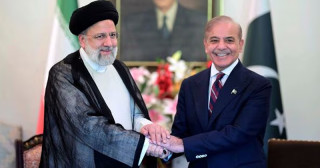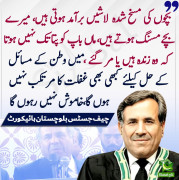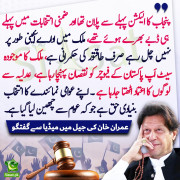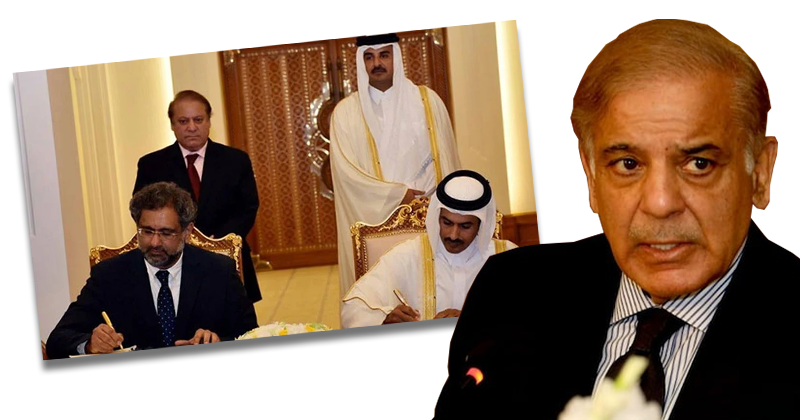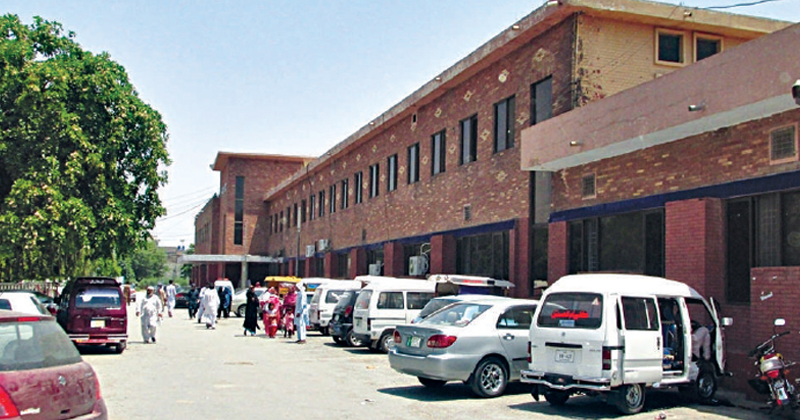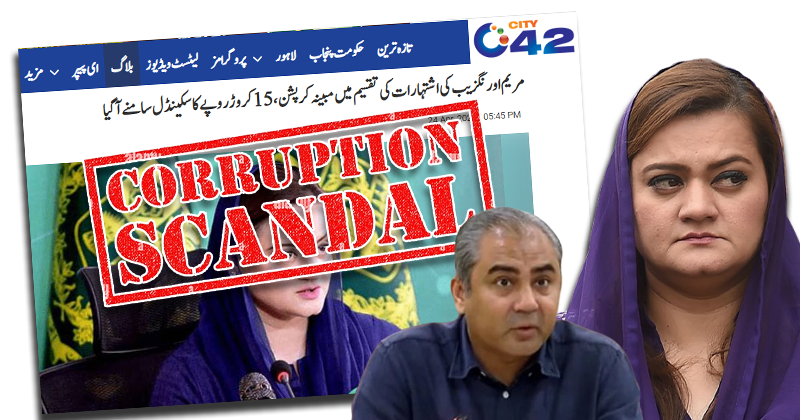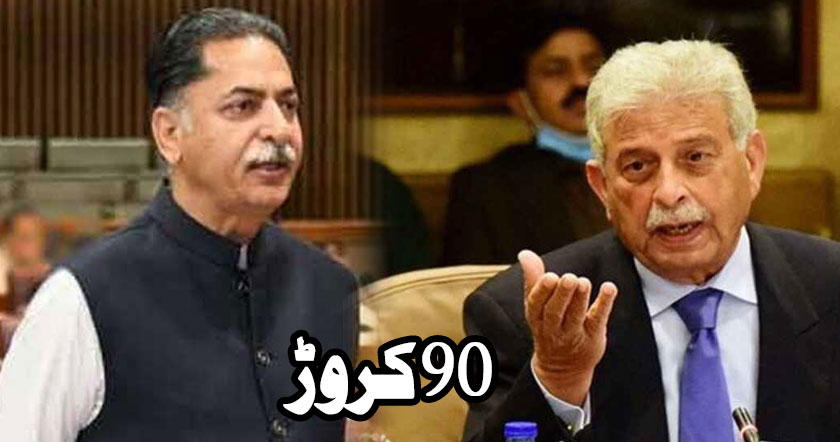Asia 2025, a US Defense Department Study produced in summer of 1999, forecast that Pakistan would "disappear" as an independent state by 2015. Since the issuance of this dire forecast, Pakistan has not only survived but its economy has nearly quintupled from $62 billion in 1999 to over $300 billion in 2018. This has happened in spite of political corruptionand instability and terror Pakistan has suffered from due to the Afghan war next door and Indian sponsored proxy waragainst it.
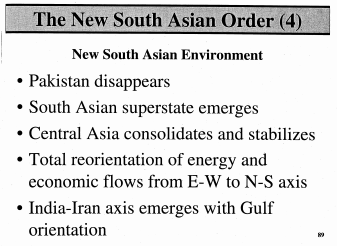
US Department of Defense Summer Study 1999
Dire Forecasts:
The US DoD 1999 forecast was not the first nor would it be the last dire prediction by western and Indian "scholars" working in the American academia and Washington think tanks.
Many western and Indian analysts have been forecasting Pakistan's demise as the country struggles to deal with terrorism at home. Among them is former President George W. Bush's adviser David Kilcullen.
"We're now reaching the point where within one to six months we could see the collapse of the Pakistani state, also because of the global financial crisis, which just exacerbates all these problems. . . . The collapse of Pakistan, al-Qaeda acquiring nuclear weapons, an extremist takeover -- that would dwarf everything we've seen in the war on terror today", said Bush Iraq adviser, David Kilcullen, on the eve of Pakistan Day in 2009 commemorating Pakistan Resolution of 1940 that started the Pakistan Movement leading to the creation of the nation on August 14, 1947. Kilcullen is not alone in the belief that Pakistani state is in danger of collapse.
Others, such as Shahan Mufti of the Global Post, argued in 2009 that Pakistan is dying a slow death with each act of terrorism on its soil.
In 1947, Lord Mountbatten, the British Viceroy of India who oversaw the partition agreed with the assessment of Pakistan made by India's leaders when he described Pakistan as a "Nissen hut" or a "temporary tent" in a conversation with Jawarhar Lal Nehru.
Here's the exact quote from Mountbatten: "administratively it [wa]s the difference between putting up a permanent building, a nissen hut or a tent. As far as Pakistan is concerned we are putting up a tent. We can do no more." The Brits and the Hindu leadership of India both fully expected Pakistan to fold soon after partition.
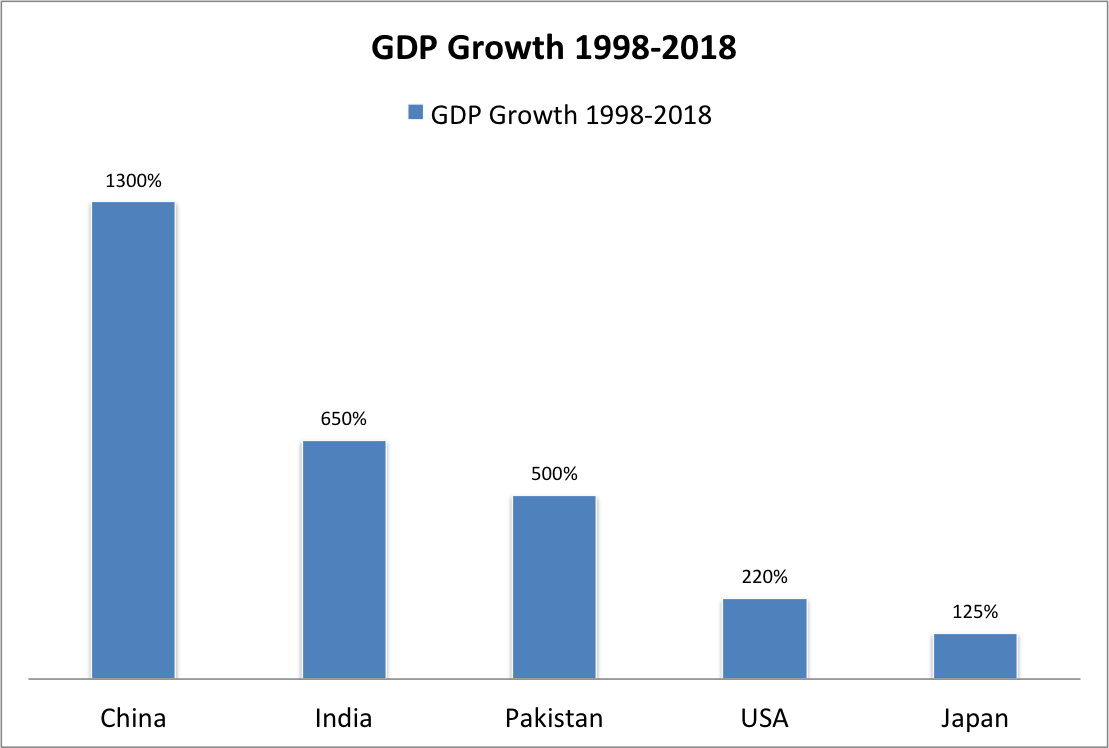
GDP Growth Comparison 1998-2008
Economic Comparisons:
In spite of all of the multiple challenges on several fronts that Pakistan continues to face, the country's 5X GDP growth over the last two decades is not too shabby when compared with India's 6.5X jump in the same period. Here are the figures for several countries from Spectator Index:
China: 13X growth in GDP from $1 trillion in 1998 to $13.1 trillion in 2018
India: 6.5X growth in GDP from $400 billion in 1998 to $2.6 trillion in 2018
Pakistan: 5X growth in GDP from $62 billion in 1998 to $308 billion in 2018
United States: 2.2X growth in GDP from $9 trillion in 1998 to $20 trillion in 2018
Japan: 1.25X growth in GDP from $4 trillion in 1998 to $5 trillion in 2018
Per Capita Incomes:
Pakistan has not done as well in terms of per capita income growth for several reasons including poor governance and corruption since 2008 and faster population growth than in China, India and other countries. Per Capita income in Pakistan grew 22% since 2012, half of the 43% growth in India during the same period. China topped with 48% in per capita income since 2012.
Here are per capita income growth figures for selected countries since 2012:
China: 48%, India: 43%, Turkey: 32%, Indonesia: 29%, Pakistan: 22%, UK: 15%, US: 15%, Japan: 15%, Germany: 13%, Canada: 13%, France: 11%, Saudi Arabia: 10%, Greece: 9.5%, Russia: 8%, Italy: 8%, Nigeria: 7.5% and Brazil: 0%.
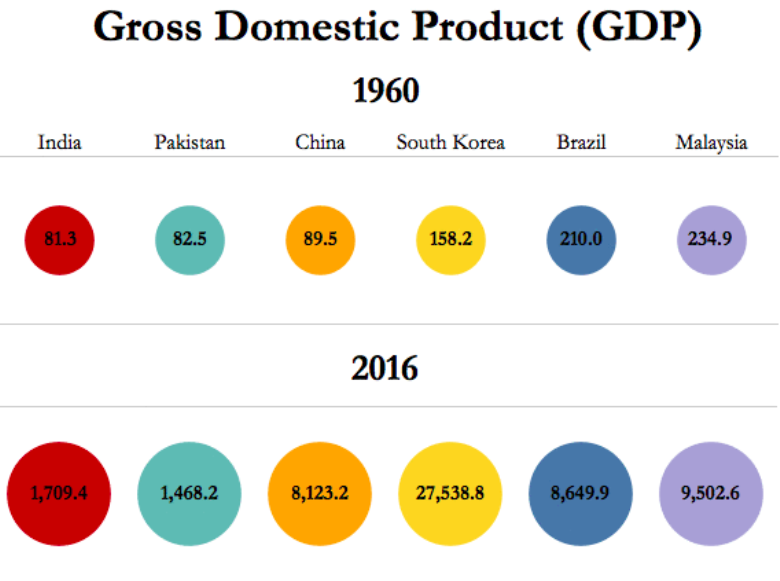
Pakistan has lagged its peers in per capita income growth over the last 5 decades. Pakistan's economic performance is especially disappointing relative to Asian Tigers like Malaysia and South Korea. Pakistan was on a similar trajectory as the Asian Tigers during 1960s under Gen Ayub Khan's rule. GDP growth in this decade jumped to an average annual rate of 6 percent from 3 percent in the 1950s, according to Pakistani economist Dr. Ishrat Husain. Dr. Husain says: "The manufacturing sector expanded by 9 percent annually and various new industries were set up. Agriculture grew at a respectable rate of 4 percent with the introduction of Green Revolution technology. Governance improved with a major expansion in the government’s capacity for policy analysis, design and implementation, as well as the far-reaching process of institution building.7 The Pakistani polity evolved from what political scientists called a “soft state” to a “developmental” one that had acquired the semblance of political legitimacy. By 1969, Pakistan’s manufactured exports were higher than the exports of Thailand, Malaysia and Indonesia combined."
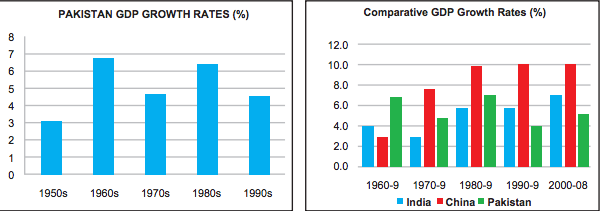
Pakistan Growth By Decades. Source: National Trade and Transport Facility
Since 1947, Pakistan has seen three periods of military rule: 1960s, 1980s and 2000s. In each of these decades, Pakistan's economy has performed significantly better than in decades under political governments. The worst decade for Pakistan's economy was 1990s, also known as the lost decade, when the GDP grew just 4% as Benazir Bhutto and Nawaz Sharif took turns to mismanage it.
Pakistan's GDP growth in decades under military rule has been 1.5-2.5% faster on average than under civilian rule. Though the difference of 1.5% in GDP growth appears small, it would have made a huge difference when compounded over multiple decades and put Pakistan in the ranks of Asian Tigers.
Summary:
Pakistan has defied repeated dire forecasts of doom and gloom since its independence. Its economy has grown 500% over the last two decades in spite of political corruption and serious security challenges and instability created by the Afghan war next door and Indian sponsored proxy war against it. Pakistan's GDP growth in decades under military rule has been 1.5-2% faster on average than under civilian rule. Though the difference of 1.5% in GDP growth appears small, it would have made a huge difference when compounded over multiple decades and put Pakistan in the ranks of Asian Tigers.
https://www.southasiainvestor.com/2018/07/pakistans-economic-performance-since.html

US Department of Defense Summer Study 1999
Dire Forecasts:
The US DoD 1999 forecast was not the first nor would it be the last dire prediction by western and Indian "scholars" working in the American academia and Washington think tanks.
Many western and Indian analysts have been forecasting Pakistan's demise as the country struggles to deal with terrorism at home. Among them is former President George W. Bush's adviser David Kilcullen.
"We're now reaching the point where within one to six months we could see the collapse of the Pakistani state, also because of the global financial crisis, which just exacerbates all these problems. . . . The collapse of Pakistan, al-Qaeda acquiring nuclear weapons, an extremist takeover -- that would dwarf everything we've seen in the war on terror today", said Bush Iraq adviser, David Kilcullen, on the eve of Pakistan Day in 2009 commemorating Pakistan Resolution of 1940 that started the Pakistan Movement leading to the creation of the nation on August 14, 1947. Kilcullen is not alone in the belief that Pakistani state is in danger of collapse.
Others, such as Shahan Mufti of the Global Post, argued in 2009 that Pakistan is dying a slow death with each act of terrorism on its soil.
In 1947, Lord Mountbatten, the British Viceroy of India who oversaw the partition agreed with the assessment of Pakistan made by India's leaders when he described Pakistan as a "Nissen hut" or a "temporary tent" in a conversation with Jawarhar Lal Nehru.
Here's the exact quote from Mountbatten: "administratively it [wa]s the difference between putting up a permanent building, a nissen hut or a tent. As far as Pakistan is concerned we are putting up a tent. We can do no more." The Brits and the Hindu leadership of India both fully expected Pakistan to fold soon after partition.

GDP Growth Comparison 1998-2008
Economic Comparisons:
In spite of all of the multiple challenges on several fronts that Pakistan continues to face, the country's 5X GDP growth over the last two decades is not too shabby when compared with India's 6.5X jump in the same period. Here are the figures for several countries from Spectator Index:
China: 13X growth in GDP from $1 trillion in 1998 to $13.1 trillion in 2018
India: 6.5X growth in GDP from $400 billion in 1998 to $2.6 trillion in 2018
Pakistan: 5X growth in GDP from $62 billion in 1998 to $308 billion in 2018
United States: 2.2X growth in GDP from $9 trillion in 1998 to $20 trillion in 2018
Japan: 1.25X growth in GDP from $4 trillion in 1998 to $5 trillion in 2018
Per Capita Incomes:
Pakistan has not done as well in terms of per capita income growth for several reasons including poor governance and corruption since 2008 and faster population growth than in China, India and other countries. Per Capita income in Pakistan grew 22% since 2012, half of the 43% growth in India during the same period. China topped with 48% in per capita income since 2012.
Here are per capita income growth figures for selected countries since 2012:
China: 48%, India: 43%, Turkey: 32%, Indonesia: 29%, Pakistan: 22%, UK: 15%, US: 15%, Japan: 15%, Germany: 13%, Canada: 13%, France: 11%, Saudi Arabia: 10%, Greece: 9.5%, Russia: 8%, Italy: 8%, Nigeria: 7.5% and Brazil: 0%.

Pakistan has lagged its peers in per capita income growth over the last 5 decades. Pakistan's economic performance is especially disappointing relative to Asian Tigers like Malaysia and South Korea. Pakistan was on a similar trajectory as the Asian Tigers during 1960s under Gen Ayub Khan's rule. GDP growth in this decade jumped to an average annual rate of 6 percent from 3 percent in the 1950s, according to Pakistani economist Dr. Ishrat Husain. Dr. Husain says: "The manufacturing sector expanded by 9 percent annually and various new industries were set up. Agriculture grew at a respectable rate of 4 percent with the introduction of Green Revolution technology. Governance improved with a major expansion in the government’s capacity for policy analysis, design and implementation, as well as the far-reaching process of institution building.7 The Pakistani polity evolved from what political scientists called a “soft state” to a “developmental” one that had acquired the semblance of political legitimacy. By 1969, Pakistan’s manufactured exports were higher than the exports of Thailand, Malaysia and Indonesia combined."

Pakistan Growth By Decades. Source: National Trade and Transport Facility
Since 1947, Pakistan has seen three periods of military rule: 1960s, 1980s and 2000s. In each of these decades, Pakistan's economy has performed significantly better than in decades under political governments. The worst decade for Pakistan's economy was 1990s, also known as the lost decade, when the GDP grew just 4% as Benazir Bhutto and Nawaz Sharif took turns to mismanage it.
Pakistan's GDP growth in decades under military rule has been 1.5-2.5% faster on average than under civilian rule. Though the difference of 1.5% in GDP growth appears small, it would have made a huge difference when compounded over multiple decades and put Pakistan in the ranks of Asian Tigers.
Summary:
Pakistan has defied repeated dire forecasts of doom and gloom since its independence. Its economy has grown 500% over the last two decades in spite of political corruption and serious security challenges and instability created by the Afghan war next door and Indian sponsored proxy war against it. Pakistan's GDP growth in decades under military rule has been 1.5-2% faster on average than under civilian rule. Though the difference of 1.5% in GDP growth appears small, it would have made a huge difference when compounded over multiple decades and put Pakistan in the ranks of Asian Tigers.
https://www.southasiainvestor.com/2018/07/pakistans-economic-performance-since.html



